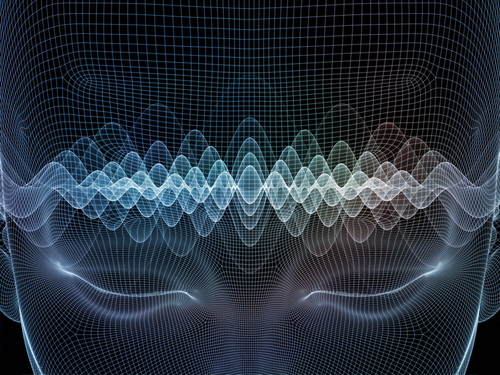Making waves? Researchers discover how information travels through the cortex
M3 Global Newsdesk Jul 14, 2018
Brain oscillations rhythmically spread across the cortex, coordinating brain activity into patterns as they move, according to novel research published in Neuron.

“Researchers had previously known that oscillations modulated cortical interactions in a point-to-point fashion between specific cortical areas,” wrote senior author Joshua Jacobs, PhD, School of Biomedical Engineering, Columbia University, New York City, NY. “Our results add to this work by demonstrating that theta and alpha oscillations can spatially and temporally organize neural processing throughout large contiguous extents of human cortex.”
Brain oscillations organize brain activity on both micro- and macroscales. These oscillations exist at different frequencies during cognition and traditionally scientists have examined only oscillations at individual frequencies in either local networks or in point-to-point links between specific brain regions.
In animal studies, experts have found that oscillations at many frequencies formulate spatially continuous neural patterns such as a traveling wave. Follow-up studies in humans have shown that these traveling waves occur during rest and are otherwise rare and small scale during cognition.
“We re-examined the potential role of cortical traveling waves in human cognition by analyzing electrocorticographic (ECoG) brain recordings from 77 neurosurgical patients,” the researchers wrote. “We analyzed the data with a new technique that identifies traveling waves at the single-trial level across various frequencies and electrode configurations.”
Of note, the subjects in this study had epilepsy, with electrodes already implanted in their brains to guide seizure mapping.
The researchers had the participants complete a memory task while the team recorded individual oscillations at the same time using multiple electrodes—a novel approach that differs from more routine research efforts that involve analyzing individual brain waves from specific locations. Moreover, the team leveraged a new analytic framework to assess the instantaneous movement of each individual traveling wave.
Dr. Jacobs and colleagues discovered traveling waves in 84% of subjects, and these traveling waves spanned a range of frequencies between 2 and 15 Hz. These waves included theta and alpha bands and were tied to performance on the memory task thus indicating behavioral importance.
Of interest, these traveling waves were more consistent when subjects did well on the memory task. In other words, these oscillations spread information across the surface of the cortex, organize neural processes, and support neural connectivity.
The team found that these traveling waves move at a rate of between 0.25 and 0.75 m/s and usually move from posterior to anterior across the neocortex.
One limitation of this study is that the participants, as stated, had epilepsy, and therefore, the results might have limited generalizability to other patient populations. Nevertheless, the authors note that previous research in healthy patients displayed the same task-related theta and alpha changes observed in the current study, including patterns present in traveling waves. Moreover, the researchers pointed out that “the spatial and temporal propagation patterns of interictal and seizure-related activity differ dramatically compared to the theta and alpha traveling waves we described.”
“Our research indicates that, when a researcher records a brain oscillation, neural activity is being communicated across the brain,” stated Dr. Jacobs. “So, in addition to opening new directions for fundamental brain research on connectivity and memory, our work suggests that clinicians can measure patterns of traveling waves to characterize an individual’s brain connectivity. Traveling waves are like ocean waves, moving across the surface of the cortex, and may also provide a new type of signal that can be used for brain-computer interfaces.”
This story is contributed by Naveed Saleh and is a part of our Global Content Initiative, where we feature selected stories from our Global network which we believe would be most useful and informative to our doctor members.
-
Exclusive Write-ups & Webinars by KOLs
-
Daily Quiz by specialty
-
Paid Market Research Surveys
-
Case discussions, News & Journals' summaries